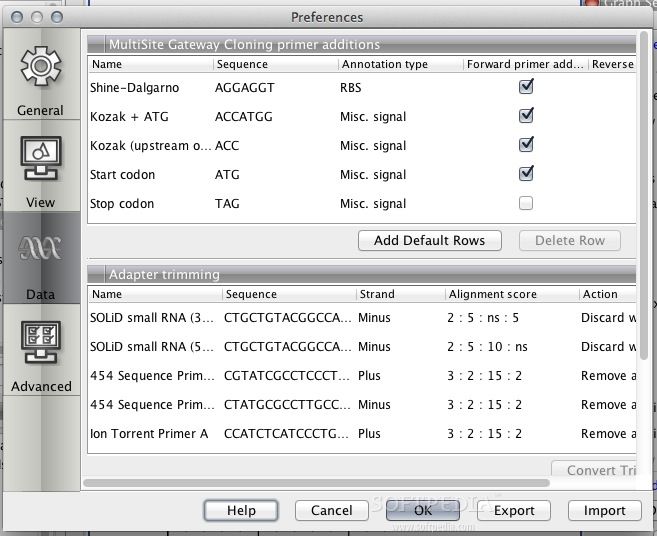
You can enable multiple views (that display your current work), zoom in or it out of the views, split your project into two or more workspaces when working with large amounts of data, and use keyboard shortcuts for fast actions. User interfaceĬLC Main Workbench comes with support for a powerful and comprehensive suite of features so be prepared to reserve some time getting used to working with the program’s GUI. The tool supports both microarray- and sequencing-based (RNA-Seq) expression data and includes all features embedded in CLC DNA Workbench, CLC RNA Workbench, and CLC Protein Workbench, as well as a range of gene expression options.
Clc genomics workbench 7.5 software#
Our research provides a platform for further investigation into interactions between the PBNSPaV genotype and the host phenotype of PBNSPaV-infected sweet cherry.CLC Main Workbench is a professional software application specialized in advanced protein sequence analyses, data management, as well visual representations with the aid of heat maps, tables and scatter plotting options. To our knowledge, this is the first report of a completed genome of PBNSPaV identified from cherry trees. ORFs 4, 5, and 6 encode a 61.6-kDa protein of unknown function, a 35.9-kDa capsid protein (CP), and a 25.2-kDa minor capsid protein (CPm), respectively ( 1). ORF3 encodes a 57.4-kDa heat shock protein homolog (HSP70h). ORF2 encodes a 6.3-kDa hydrophobic protein. ORF1b encodes a 64.1-kDa RNA-dependent RNA polymerase (RdRp). ORF1a encodes a large 260-kDa polyprotein, which consists of putative papain-like protease, methyltransferase, and helicase. There is a putative +1 ribosomal frameshift in ORF1b. The complete genome sequence of PBNSPaV-TA consisted of 14,213 nucleotides (nt) obtained through deep sequencing and overlapping RT-PCR. The complete genome sequence of PBNSPaV-TA was obtained using small RNA sequencing, followed by overlapping RT-PCR and 5′ and 3′ rapid amplification of cDNA ends. From the pool of clean reads, contigs were assembled using CLC Genomics Workbench version 7.5 (CLC Bio, Aarhus, Denmark). The Illumina HiSeq 2000 platform was used for the small RNA sequencing. Construction of a small RNA library was done by using a TruSeq small RNA sample prep kit (Illumina, San Diego, CA, USA), followed by 6% polyacrylamide gel electrophoresis for selection of low molecular weight RNAs. Total RNA was extracted from the PBNSPaV-infected tree. The complete genome of PBNSPaV-TA from sweet cherry was determined using small-RNA deep sequencing followed by overlapping RT-PCR.

We named this PBNSPaV isolate PBNSPaV-TA.

In a survey carried out for viruses on virus-infected sweet cherry ( Prunus avium L.) trees of the cultivar “Red Lamp” in Shandong Province, China, we found that the infection of PBNSPaV may contribute to the symptoms of long and crinkled leaves, minor fruit-set, and late fruit-ripening in the “Red Lamp” cultivar. In recent years, the deep-sequencing approach is being increasingly applied for the broad-spectrum detection and population genetic analysis of PBNSPaV ( 2). The PBNSPaV RNA genome encodes seven major open reading frames (ORFs), which is the simplest genome organization within the genus Ampelovirus ( 1). Plum bark necrosis stem pitting–associated virus (PBNSPaV) is a member of the genus Ampelovirus, family Closteroviridae, and has been considered as the causal agent of the plum bark necrosis stem pitting–associated disease ( 1).


 0 kommentar(er)
0 kommentar(er)
